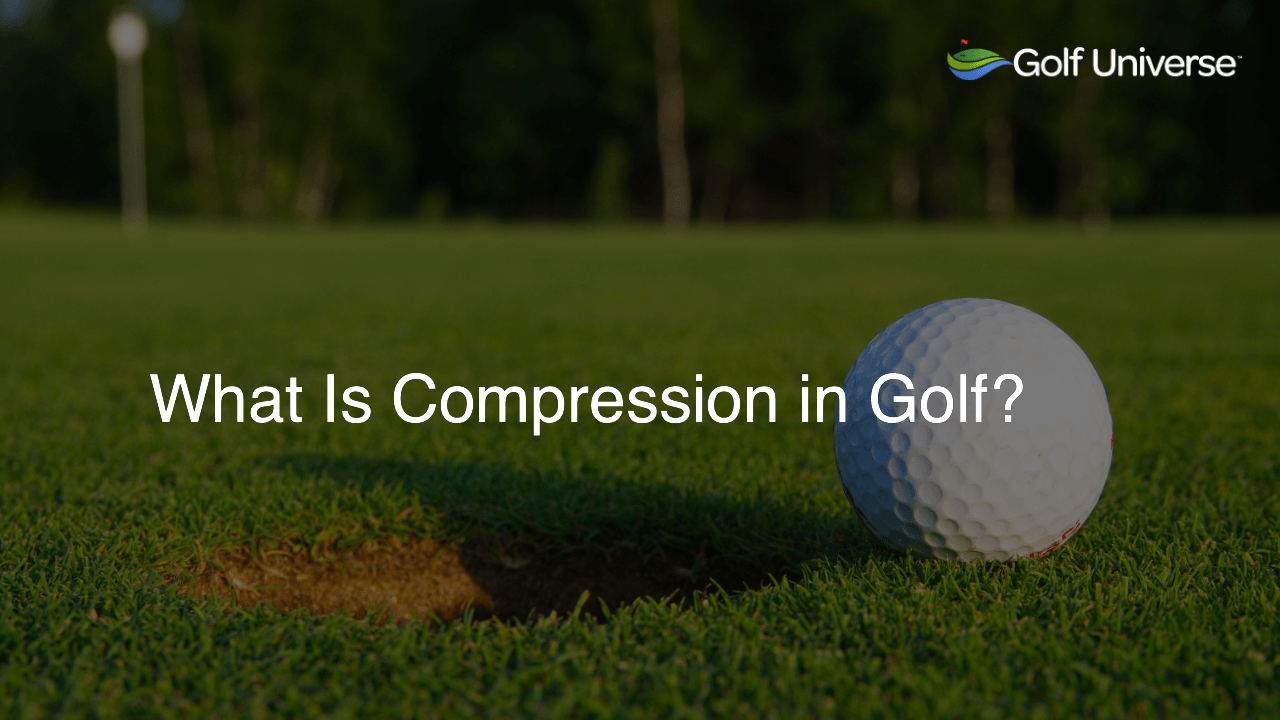Compression in golf refers to the flattening of the golf ball upon impact with the clubface, influencing distance, feel, and control. A ball’s compression rating indicates its degree of softness or firmness, affecting performance based on an individual’s swing speed.
Understanding Golf Ball Compression
Compression in golf is the measure of how a golf ball flattens or compresses when it makes contact with the clubface. This compression influences the ball’s distance, feel, and control. Each golf ball has a specific compression rating, indicating its softness or firmness, which affects its overall performance depending on a player’s swing speed.
Golf Ball Compression Ratings
Golf balls are generally categorized into three groups based on their compression ratings:
Low Compression Golf Balls
These balls have a compression rating of 80 or below, making them softer and more easily compressed. Low compression balls are ideal for players with a slower swing speed, typically beginners or senior golfers. They provide a better feel and more distance, as they require less force to compress upon impact.
Medium Compression Golf Balls
With a compression rating between 80 and 100, medium compression balls cater to the average golfer with a moderate swing speed. These balls strike a balance between distance and control, offering a solid performance for players who do not need extreme softness or firmness.
High Compression Golf Balls
High compression balls, with a rating of 100 or above, are the firmest options. These balls are well-suited for golfers with a higher swing speed, as they generate more distance and control when compressed with great force. Skilled and professional players often prefer high compression balls for their enhanced performance capabilities.
Choosing the Right Compression for Your Game
Selecting the most suitable golf ball compression for your game is essential to optimize your performance on the course. Assess your swing speed to identify the appropriate compression for your needs. Players with a slower swing speed (below 85 mph) are better suited to low compression balls, while those with a moderate swing speed (85-105 mph) will benefit most from medium compression ones. Golfers with a fast swing speed (above 105 mph) should opt for high compression golf balls to maximize distance and control.
Why Golf Ball Compression Matters
Understanding golf ball compression is crucial as it affects how the ball reacts and performs on the course. The relationship between the ball’s compression and a player’s swing speed directly influences the distance, control, and feel of each shot. As a golfer, knowing your swing speed and matching it with the appropriate compression can dramatically improve your game experience and performance.
Golf Universe Recommendation
At Golf Universe, our goal is to provide golfers with valuable knowledge and insights to improve their game. As a blog about golf, our expert team at Golf Universe recommends assessing your swing speed and trying different types of golf balls with various compression ratings on the course. This will help you understand how each ball performs based on its compression and ultimately identify the best one for you.
Experimenting with Golf Ball Compression
Do not be afraid to experiment with various compression-rated golf balls until you find the one that provides the best combination of distance, control, and feel for your swing. With the correct golf ball, you will experience improvements in your game in no time.
Taking Advantage of Golf Ball Technologies
As the golf industry advances, manufacturers are continually developing new technologies to enhance golf ball performance. It is vital to stay updated about the latest products available on the market. At Golf Universe, we strive to keep our readers informed about these developments, allowing you to make better decisions and elevate your game.
FAQ Section
In this section, we address some frequently asked questions related to golf ball compression, its importance in your game, and how to choose the right ball. Get answers to these common questions for a better understanding of the topic.
What is the significance of golf ball compression?
Golf ball compression affects the distance, control, and feel of a player’s shots. Matching a player’s swing speed with the appropriate compression can help improve overall game performance and playing experience.
How do I determine my swing speed to select the right golf ball?
To determine your swing speed, visit a professional club fitter, use a launch monitor at a local golf facility, or try gadgets specifically designed to measure swing speed. Once you know your speed, you can choose the appropriate compression ball for your game.
Can I use a golf ball with a different compression rating than recommended for my swing speed?
Yes, you can use a golf ball with a different compression rating. However, using a ball with a compression level not recommended for your swing speed might compromise distance, feel, and control, potentially affecting your overall performance.
How can I distinguish between various compression ratings of golf balls?
Golf ball packaging typically displays the compression rating. Additionally, you can refer to the ball manufacturer’s website or consult a golf retail expert to help identify the correct compression rating for each ball.
Do professionals use high compression golf balls exclusively?
While many professionals prefer high compression golf balls due to their advanced skill level and faster swing speeds, some opt for a combination of control, feel, and distance provided by medium compression balls. The choice ultimately depends on individual playing preferences and course conditions.











